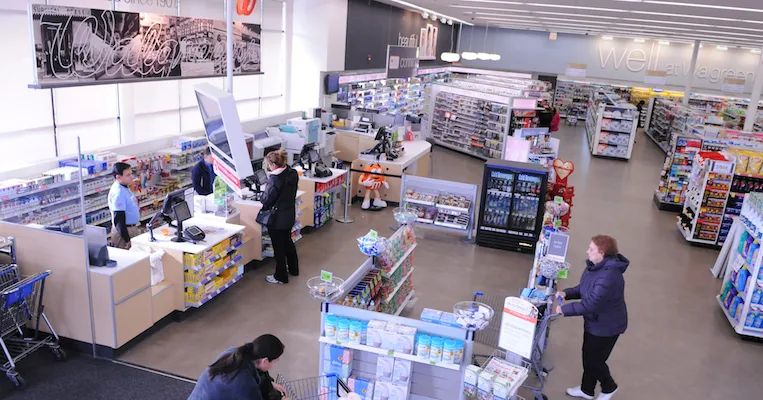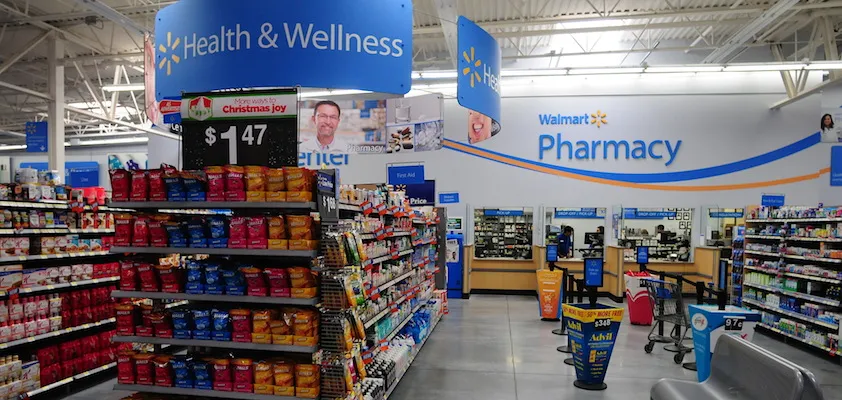As prescription drug revenue and profitability are threatened by the expanding share of generics and continued reimbursement pressures, many chain drug retailers are counting on improved front-of-store sales and profitability to counterbalance the declines.
That goal faces several challenges. Increases in mail-order prescriptions and 90-day refills reduce prescription-driven door turns. The aggressive growth of small-format stores — including the dollar channel and pushes by both Walmart and Target Corp. into smaller formats — creates new competition for fill-in and convenience trips.
Meanwhile, online retailers — both stand-alone and those with brick-and-mortar outlets — are starting to effectively target and serve chain drug’s most attractive shoppers.
On the horizon, however, one unsettling force stands out from all of these competitive pressures: the disruptive nature of big data analytics applied in novel ways to fundamentally change the value proposition for chain drug’s front-end shoppers.
This is the second of a two-part article covering big data disruptions in the front of the store and the health care corner. In it we’ll discuss three potential disruptors that could wreak havoc on chain drug’s shopper base over the next five years.
The first threat is new entrants that will likely target the most profitable shopper segments and purchases by using big data to understand what they are buying and how they prefer to shop — the Cherry Pickers.
Second, companies that are able to put together a 360-degree view of consumers’ purchase behavior are likely to hold the key to pricing and promotional effectiveness, thus emerging as critical disintermediaries — the New Data Syndicators.
Finally, we see the potential for consumers to use big data techniques to band together into self-directed affinity groups to take control of purchase volumes and demand lower prices — the Affinity Aggregators.
Cherry Pickers
In August, Uber rolled out Cornerstone, a corner store delivery pilot, in Washington, D.C. Uber users can order from a list of 100 household items — with no minimum order and no delivery fee — and receive delivery in as little as 10 minutes.
Although Cornerstone is just a test right now, imagine a world where Uber, Amazon, Walmart and other players integrate shopper data from many sources to identify the most brand-loyal and profitable chain drug shoppers. These players are likely to develop individualized marketing, pricing and promotion offers for these highly attractive shopper segments — determining which trips to target and how to deliver against the expectations of specific shoppers.
Amazon, a savvy data analytics practitioner, already offers household and health and beauty products via its Amazon Pantry subscription model, obviating the need for a store visit. Big data analytics provides Amazon (and others) the path to understand which customers are most apt to take advantage of the new services — the customers who would most value a fundamentally more convenient shopping experience, bringing convenience and price competitiveness directly to the consumer’s front door.
The shoppers and trips siphoned off by these players will likely come from chain drug retailers’ most profitable, and currently most loyal, customers. Although top-tier customers have always engendered competitive threats, big data analytics will empower many new players to make those threats — and indeed new companies will make the analytics capabilities easy to acquire.
New Data Syndicators
To date, big data analytics capabilities in retail have largely focused on harvesting insights from transactional data attached to households — sourced from shoppers within the four walls of a given retailer. Due to the wealth of transactional point-of-sale and loyalty data, many retailers are well developed in analytics that leverage these sources to tailor store assortments by store segment and individualize promotional offers.
However, new data sources and players are emerging fast — and offer a much broader view of shoppers. For example, companies such as Axciom and Experian are developing rich views of consumers across channels and interactions, creating novel and fundamentally more effective targeting capabilities.
As these third-party data syndicators integrate rich new sources of social media data to develop robust views of consumer purchasing behavior and its drivers, they are likely to offer new targeting services that fundamentally transform approaches to consumer engagement.
Chain drug retailers that do not position themselves to synchronize these external capabilities with conventional big data analytics are likely to experience both trip loss and basket erosion. The losses will come from the actions of competitors — or even of consumers themselves.
Affinity Aggregators
Some consumers already aggregate their buying power — in such groups as AARP — to drive lower prices for financial services, restaurants, travel and more. But traditionally these aggregations have been small in number and scope, because developing such a consumer buyer base has required significant investments in infrastructure, marketing capability, member recruitment and development, and negotiations.
In the next five years, however, many of these barriers to entry will likely become virtually nonexistent.
Consumers with similar preferences and profiles could, relatively easily, form buying communities to gain leverage. As mobile payment solutions take off and digital receipts become ubiquitous, those consumer groups will likely be able to use big data solutions to easily gather and integrate transactional data. With the addition of unstructured social media data from Facebook, Twitter and other online communities, they will gain a rich understanding of how best to leverage shared need states to negotiate lower prices from retailers of all types.
New buying groups could emerge anywhere. For example, communities of consumers at similar life stages, such as those utilizing the same day care facilities, have similar demands and preferences; big data trends make them easy to aggregate. This is democratization of data, where consumers take control of analytics capabilities traditionally wielded by retailers. Such democratization could threaten material segments of health and beauty, over-the-counter, confectionery, and other core front-of-store categories.
Moving forward
In short, three types of new competitors — cherry-picking retailers, third-party data specialists and affinity-based consumer buying groups — could all disrupt the way that customers shop in the front of the store.
Given the speed at which new big data applications are emerging to empower those competitors, chain drug retailers need to prepare now. And although most people already grasp the value of a deeper understanding of in-store behavior, as a result of these disruptions tomorrow’s differentiated performance will require a richer, more complete understanding of shoppers — one that is much more difficult to come by.
To prioritize which capabilities to focus on next, chain drug retailers will be well served to start by considering their key strategic issues — and then determine which insights, in an unconstrained world, will best provide a shopper-centric perspective on those issues.
Critical steps will include determining the right external data and partners to pursue, developing the ability to seamlessly integrate external and internal data sources, and investing in new analytics and engagement capabilities.
Chain drug retailers that succeed at these steps will develop fundamentally new insights to help optimize established shopper relationships, identify new customers, and develop the marketing and merchandising capabilities required to win them over.
The new battlefield for shoppers is just now emerging. Acting now to get in front of the coming disruption offers the best chance to defend current share and to source new growth and profitability opportunities.
Khalid Khan (khalid.khan@atkearney.com) is a partner with A.T. Kearney’s Analytics Practice leading the Americas. Randy Burt (randy.burt@atkearney.com) is a principal with A.T. Kearney’s Consumer Products and Retail Practice. Both are based in Chicago.









